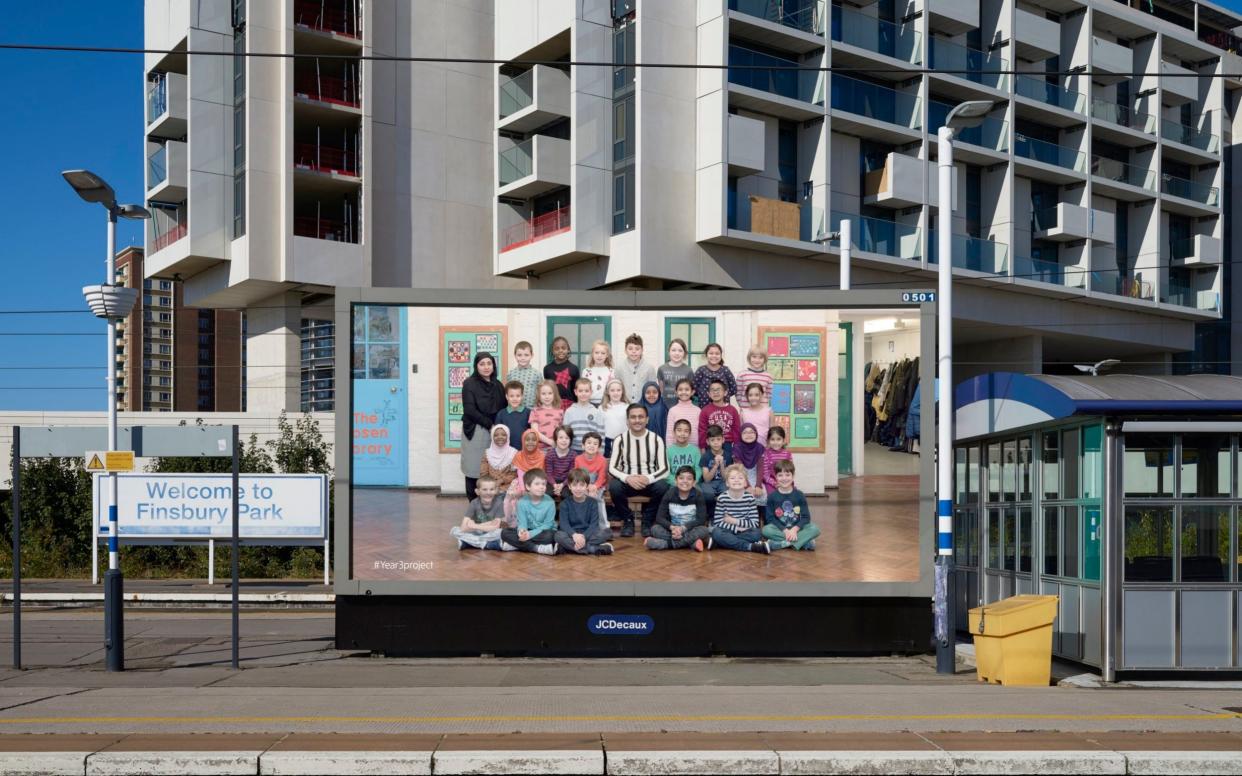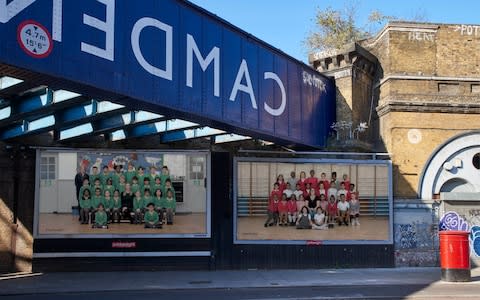Year 3 Project, review: Steve McQueen's school photos are epic in scale but small in impact

On Hackney Downs railway station in east London, lunchtime passengers were drifting past a large billboard photograph of a school year group with barely a glance.
No one seemed to know, or care, that it was part of artist Steve McQueen’s vast London-wide Year 3 Project. Even the station staff I had to ask for brief platform admittance neither knew of the work’s existence nor who McQueen is.
“He’s the artist and film director who made 12 Years a Slave,” I offered. “He won an Oscar.” Proof, then, that the intersection between the art world and the real world is tangential at best.
Nevertheless, the project is clearly an attempt to bridge the gap. The scale of it is remarkable: 76,000 children; 600 separate group portraits, pasted up beside roads, on high streets, opposite underground platforms, across 33 boroughs. A year and a half in the making. Consent forms to be signed for every child.
Of course, this most unfascinating of images – the class photograph – holds few surprises. Nearly all of us have been there, done that, and got the reprint. School photographs are always of most interest to the children in them and their parents, although they latterly gain attention from adult friends entertained by early examples of bad haircuts and goofy expressions. As an image on a billboard, a school year group suggests, more than anything, an advert for a building society. Fill in your own slogan, including the words, “we” and “our future”.
In fact, McQueen’s work is described in similar terms – “an epic portrait of London’s future”. It features exclusively primary schoolchildren of seven to eight years old (Year three).

Artangel, who produce site-specific works and have collaborated with the Tate (among others) on this project have provided an online map of the locations of the billboards. I set off on a cycle tour and, disappointingly, went to seven sites – following the map’s instructions as closely as possible, sometimes retracing to search again – but found only two billboards… an absent image in E8, none out of three on the Seven Sisters Road.
Opposite Stoke Newington station, though, I studied an image of a class wearing green jumpers, with green and yellow-striped ties. Some had pigtails, some wore ribbons; most were in long trousers or skirts; a few wore glasses; one a pink ear stud. Some were laughing, some pulling faces, some were watchful, slightly wary. All were looking directly at the camera.
Some, I’m sure, will be capable of looking at such an image and seeing it as evidence of London’s ever-shifting ethnicities. At the last census in 2011, 44.9 per cent of the capital’s population identified as White British, while 37 per cent of the population were born outside the UK. Yet London has always been a melting-pot city that absorbs and assimilates and makes people its own, from Romans to Huguenots to Caribbeans. I’m half-Irish and it seems to have absorbed me.
Race does seem to be part of the DNA of the project, though; social class less so. I went to a primary school with two year-group classes with more than 30 pupils in each. I haven't seen any photographs that reflected that sort of large pupil-teacher ratio, though I've only viewed a tiny sample. The locations of the billboards, too, are not paired to the vicinity of the schools where the photographs were taken. Only the schools themselves know where their own class groups are. Parents thinking of driving round until they see their children should probably plan ahead!
Year 3 Project clearly needs its scale to achieve an impact beyond the individual images. The ones I saw looked like a group of schoolkids having their photograph taken; a small adventure, the attraction of which did not seem to be lost on the two teachers pictured with them. It’s a cheerful image, but it only comes into focus as part of the wider whole.
